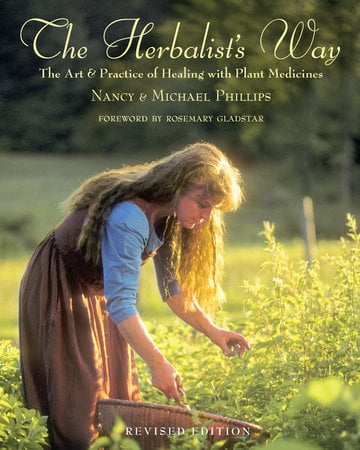Treating Hyperthyroidism: Natural Herbal Formulas

Your thyroid is responsible for controlling many of your body’s functions including metabolism, temperature, and controls some hormones. Hyperthyroidism occurs when your thyroid overproduces hormones, which can lead to a variety of diseases including Graves’ disease.
Though there are many different medications to relieve the symptoms of hyperthyroidism, there are also more natural options that use herbs in tincture or tea form.
The following is an excerpt from Herbal Formularies for Health Professionals Volume 3 by Jill Stansbury. It has been adapted for the web.
Hyperfunctioning thyroid conditions include Graves’ disease, toxic multinodular goiter, inappropriate and excessive release of TSH from the pituitary, and hyperfunctioning cysts or cells in the thyroid. Toxic multinodular hyperthyroid conditions occur most often in older people and commonly follow a history of the persistent presence of thyroid nodules. It is unknown what causes some of these cases to develop into hyperthyroid states.
Graves’ disease is the most common cause of hyperthyroidism. Graves’ disease is an autoimmune disease in which autoantibodies bind to thyroid-stimulating hormone (TSH) receptors on follicular cells of the thyroid gland, resulting in proliferation and enlargement of the thyroid gland, with excessive activation and production of thyroid hormones T4 and T3. Although autoantibodies can be observed in healthy individuals, in roughly 2.5 percent of the population, their presence triggers frank autoimmune disease such as Graves’ disease. Graves’ disease immunoglobulins are a type of immunoglobulin G (IgG) and are referred to as thyroid-stimulating immunoglobulins (TSIs), which may be detected in the blood and confirm the diagnosis of Graves’ disease. However, other types of thyroid-suppressive antibodies may also be present and contribute to the oxidative stress and inflammation in the thyroid gland, explaining some of the overlap between Hashimoto’s thyroiditis and Graves’ disease.
 The worldwide incidence of Graves’ disease has seen annual increases, possibly due to the influence of environmental factors. There are many triggers and contributors to autoimmunity; stress, environmental toxins, and viruses top the list. Several studies have provided evidence for a genetic predisposition to Graves’ disease, and psychological stress, smoking, and being female also increase the risk. Other factors such as infection, especially with Yersinia enterocolitica, or adenoviruses may also promote some cases of Graves’ disease via T helper cell ratios and their role in immune responses. Ionizing radiation or a deficiency of vitamin D or selenium may also predispose. It is proposed that these insults injure cells, leading to release of thyroid peroxidase enzymes and thyroglobulin protein into the bloodstream, which in turn elicits an immune response to the proteins. All the potential triggers can promote oxidative stress in the thyroid, and antioxidants may slow the progression of the disease.
The worldwide incidence of Graves’ disease has seen annual increases, possibly due to the influence of environmental factors. There are many triggers and contributors to autoimmunity; stress, environmental toxins, and viruses top the list. Several studies have provided evidence for a genetic predisposition to Graves’ disease, and psychological stress, smoking, and being female also increase the risk. Other factors such as infection, especially with Yersinia enterocolitica, or adenoviruses may also promote some cases of Graves’ disease via T helper cell ratios and their role in immune responses. Ionizing radiation or a deficiency of vitamin D or selenium may also predispose. It is proposed that these insults injure cells, leading to release of thyroid peroxidase enzymes and thyroglobulin protein into the bloodstream, which in turn elicits an immune response to the proteins. All the potential triggers can promote oxidative stress in the thyroid, and antioxidants may slow the progression of the disease.
Marked elevations in the output of thyroid hormones is also referred to as thyrotoxicosis. Graves’ patients often have a diffuse goiter and symptoms typical of increased basal metabolic rate such as tachycardia, increased sweating and heat intolerance, fine tremor, insomnia, fatigue, and diarrhea. Graves’ disease is also often associated with leukopenia, which can increase infection susceptibility as well as contribute to inflammation.
In tandem with increasing occurrence of autoimmune disorders of the thyroid, Graves’ exophthalmia is now a significant cause of blindness worldwide. Graves’ orbitopathy is a complication in which the upper eyelids retract in association with erythema and edema of periorbital tissue. In a small number of people, the inflammation may be so severe as to progress to optic neuropathy and compromise sight. Periorbital inflammation involves a proliferation of fatty and connective tissue behind the orbit, and a transformation of preadipocytes into adipocytes that push the eyeball outward. Graves’ exophthalmia is a protrusion of the eyeballs that occurs in roughly half of Graves’ subjects and is severe in 3 to 5 percent.
Conventional treatments for Graves’ disease include antithyroid drugs such as methimazole, radioactive iodine to ablate the thyroid, and surgical approaches. One survey reported that 74 percent of those treated with antithyroid drugs were still in remission 5 years after the therapy, and 36 percent relapsed after the drug was withdrawn. For those who do not respond to the drug, radioactive iodine may induce remission roughly two-thirds of the time, but radiation carries the risk of developing cancer at a later time. Herbal therapies for Graves’ disease can be symptomatic, aiming to help reduce sweating, heart palpitations, and insomnia, as well as treat the disorder more deeply, aiming to reduce inflammation in the thyroid and calm autoimmune reactivity leading to antibody production.
A trial fibrillation occurs in 15 percent of patients with hyperthyroidism and carries an increased risk of thromboembolism. Therefore, some experts recommend the use of anticoagulant medications when chest pain or signs of heart failure accompany. Simple aspirin as a platelet antiaggregator may be a good choice in patients without other risk factors for thromboembolitic diseases. Allium sativum, Zingiber officinale, bromelain, nattokinase, and other natural platelet antiaggregators may also help protect against clotting risk.
trial fibrillation occurs in 15 percent of patients with hyperthyroidism and carries an increased risk of thromboembolism. Therefore, some experts recommend the use of anticoagulant medications when chest pain or signs of heart failure accompany. Simple aspirin as a platelet antiaggregator may be a good choice in patients without other risk factors for thromboembolitic diseases. Allium sativum, Zingiber officinale, bromelain, nattokinase, and other natural platelet antiaggregators may also help protect against clotting risk.
In the absence of cardiac symptoms, beta blockers and antithyroid agents are standard care. Because the hyperthyroid state increases metabolism, drugs and herbs may be rapidly cleared, and larger than normal dosages are often required. Beta blockers are ideal because of the anxiolytic effects but may excessively weaken heart action in those with preexisting heart failure. Calcium channel blockers and digoxin are alternatives in such cases. Amiodarone can control atrial arrhythmias with the added benefits of inhibiting the conversion of T4 to T3 and inhibiting T3 from binding to nuclear receptors.
Plus, its high iodine content inhibits thyroid hormone synthesis. However, amiodarone has many toxic side effects. The formulation of amiodarone was inspired by the naturally occurring molecule khellin in Ammi visnaga, which was noted to alleviate anginal pain. While Ammi will not replace expert cardiac care in urgent situations, those with mild episodes of arrhythmia may respond to herbal therapies while Lugol’s solution and/or methimazole is initiated to control thyrotoxicosis. Leonurus is a mild beta blocker and may complement Ammi in such situations.
Tincture for Hyperthyroidism
This is a formula to address the main symptoms of hyperthyroidism: Leonurus for heart palpitations, Withania for insomnia, and Melissa for anxiety and tremulousness. Melissa can reduce excessive thyroid activity and possibly autoantibody-driven inflammation, as do other herbs containing rosmarinic acid, such as Lycopus, Rosmarinus officinalis, and Perilla frutescens.
Ingredients
- Leonurus cardiaca 20 ml
- Withania somnifera 20 ml
- Melissa officinalis 20 ml
Procedure
- Take 1 to 2 dropperfuls of the combined tincture, 3 or more times daily for many months.
 Tea for Hyperthyroidism
Tea for Hyperthyroidism
Choosing from the tastiest herbal options, this tea would complement the Tincture for Hyperthyroidism. Consider taking a daily selenium supplement as well.
Ingredients
- Melissa officinalis 2 ounces (60 g)
- Rosmarinus officinalis 2 ounces (60 g)
- Lithospermum ruderale 2 ounces (60 g)
- Glycyrrhiza glabra 2 ounces (60 g)
Procedure
- Mix the dry herbs together.
- Steep 1 tablespoon of the mixture per cup of hot water and then strain.
- Drink freely, 2 or more cups (480 ml) per day.
Recommended Reads
Recent Articles
You’ve Been Missing Out! Bone Broth is the ultimate superfood, packed with nutrients and goodness. Consider adding this nutrient-rich, immune system boosting bone broth into your daily diet.
Read MoreThese small fruits are a delicious source of nutrients that you can find almost anywhere. Get started on acorn harvesting with help from these simple tips!
Read MoreWondering what to do with pumpkin seeds? Instead of roasting them, try these alternative ways to prepare & use seeds! Plus a must-try pumpkin granola recipe.
Read MoreTired of trying different traditional medicines to relieve inflammation and joint pain? We have the perfect solution: honey bee venom.
Read MoreBefore yanking out the next patch of lambsquarter you find in your yard or garden, consider trying one of the many edible and medicinal uses of this “super weed.”
Read More








